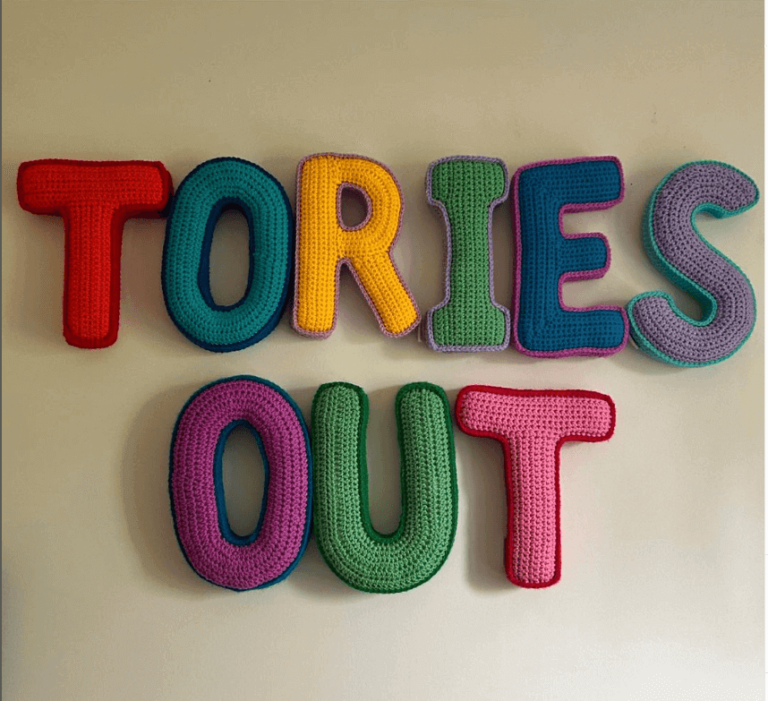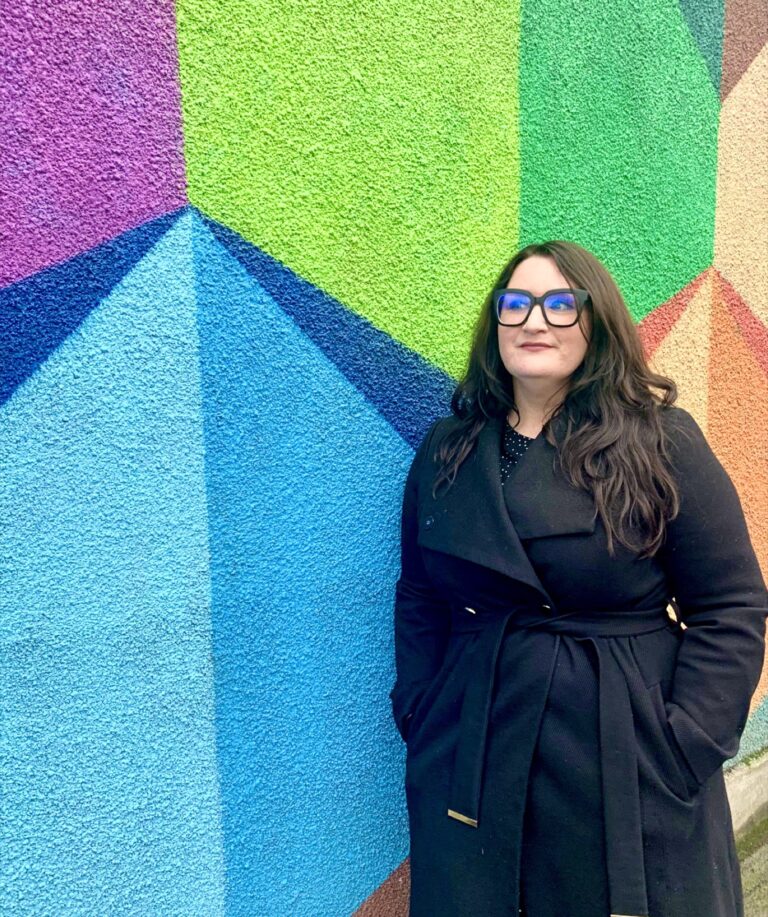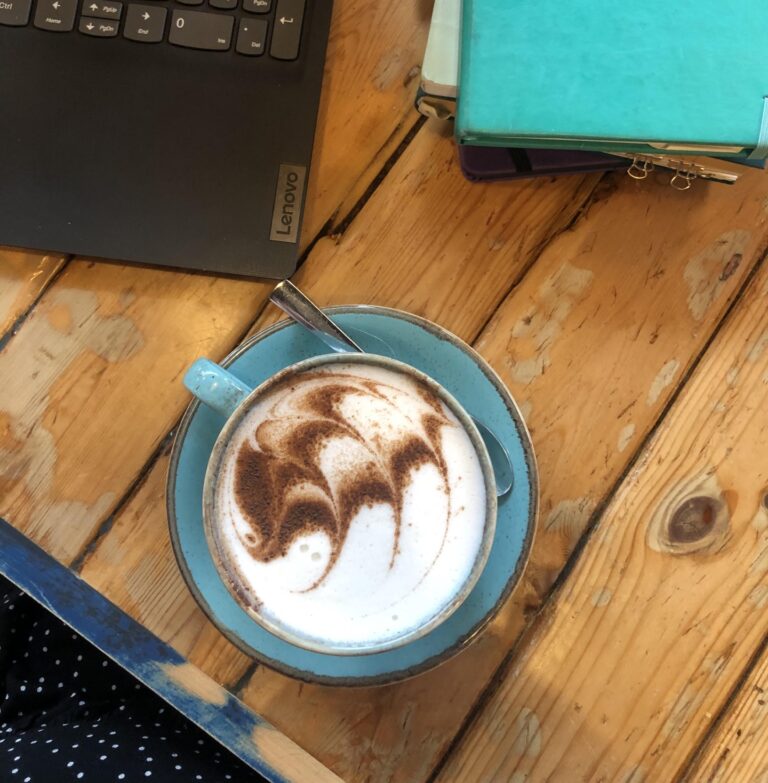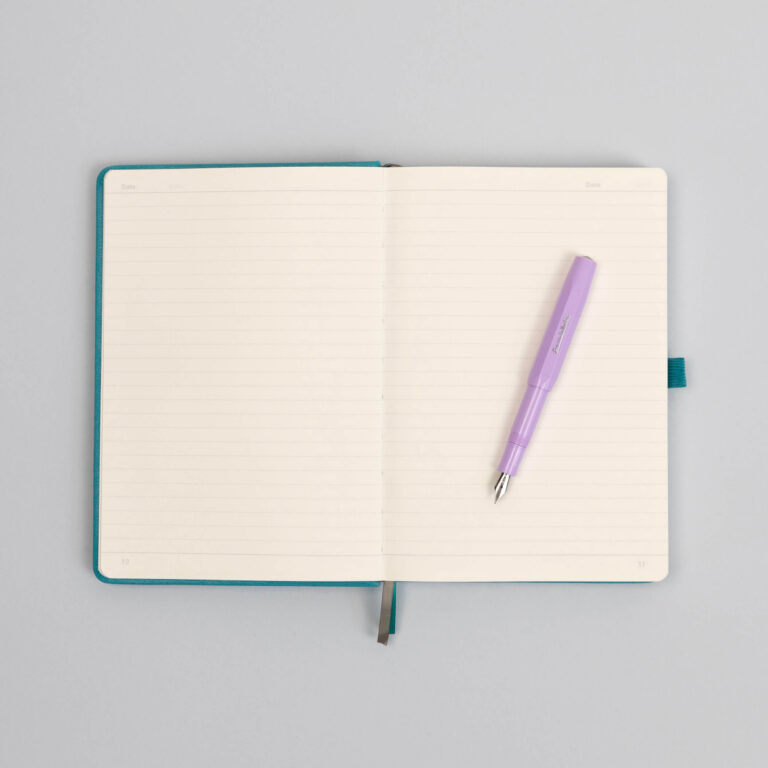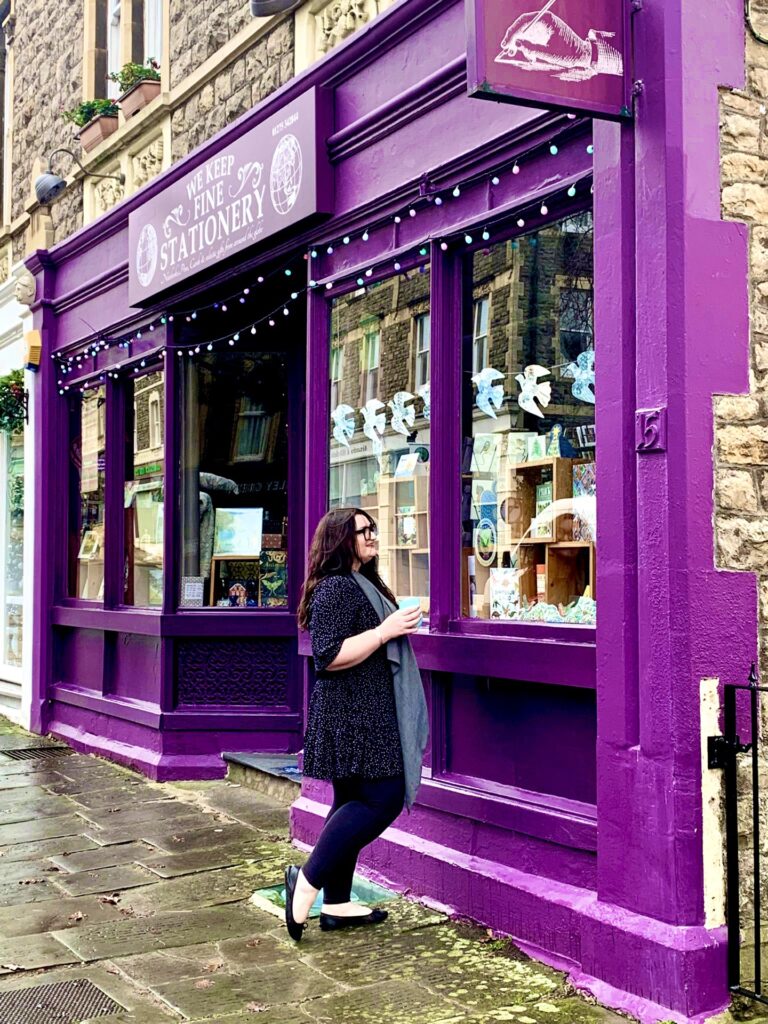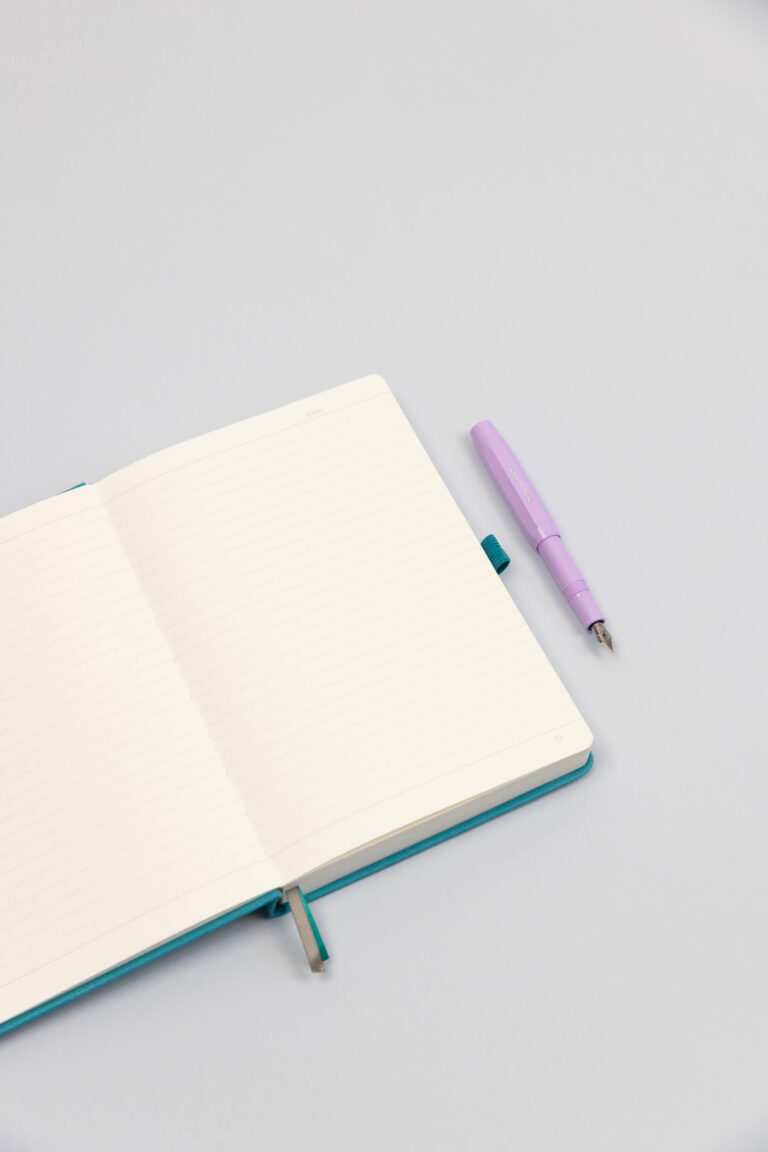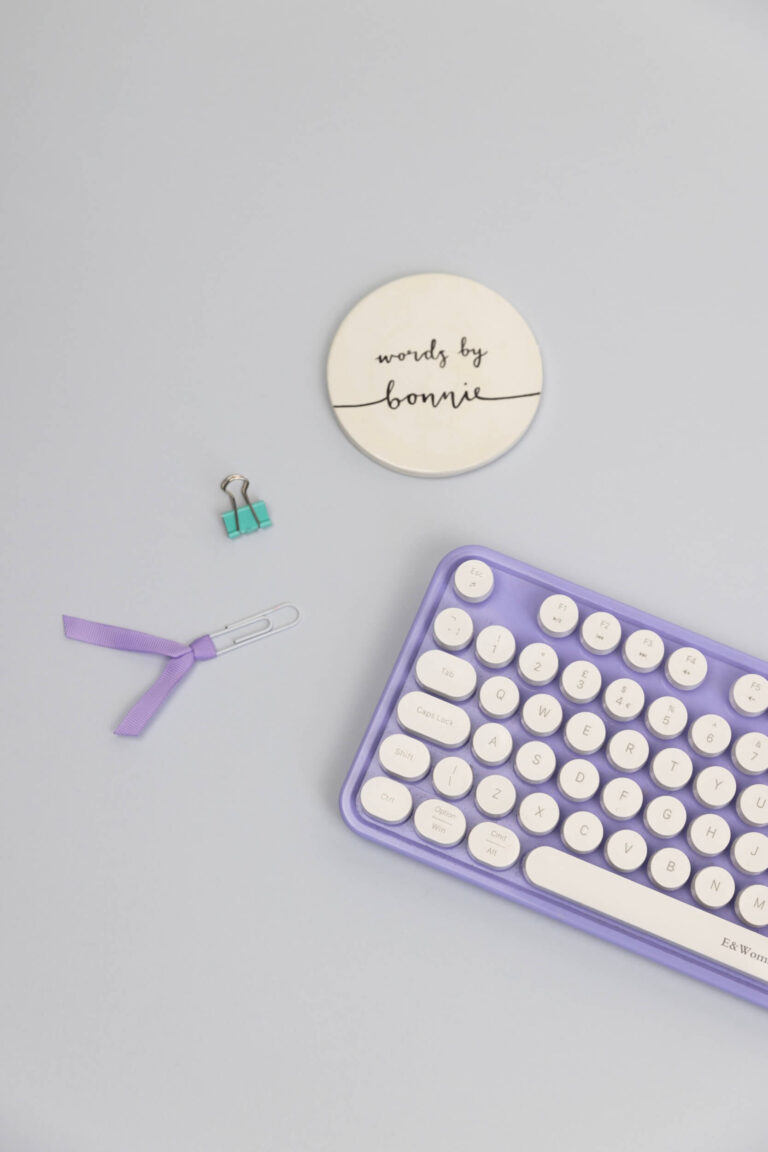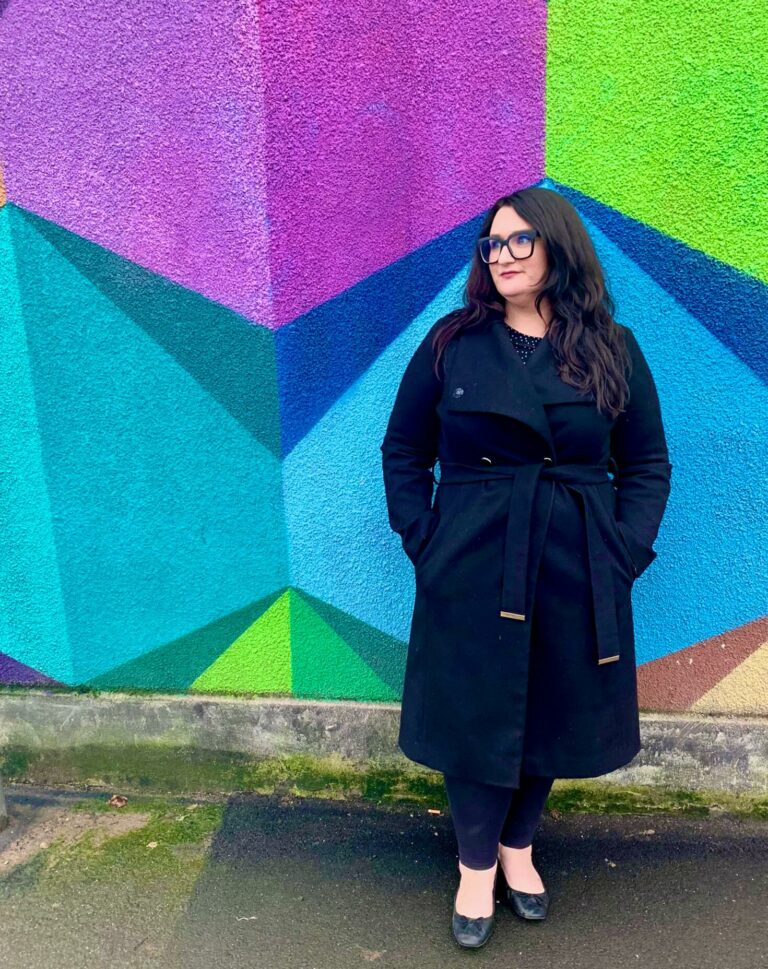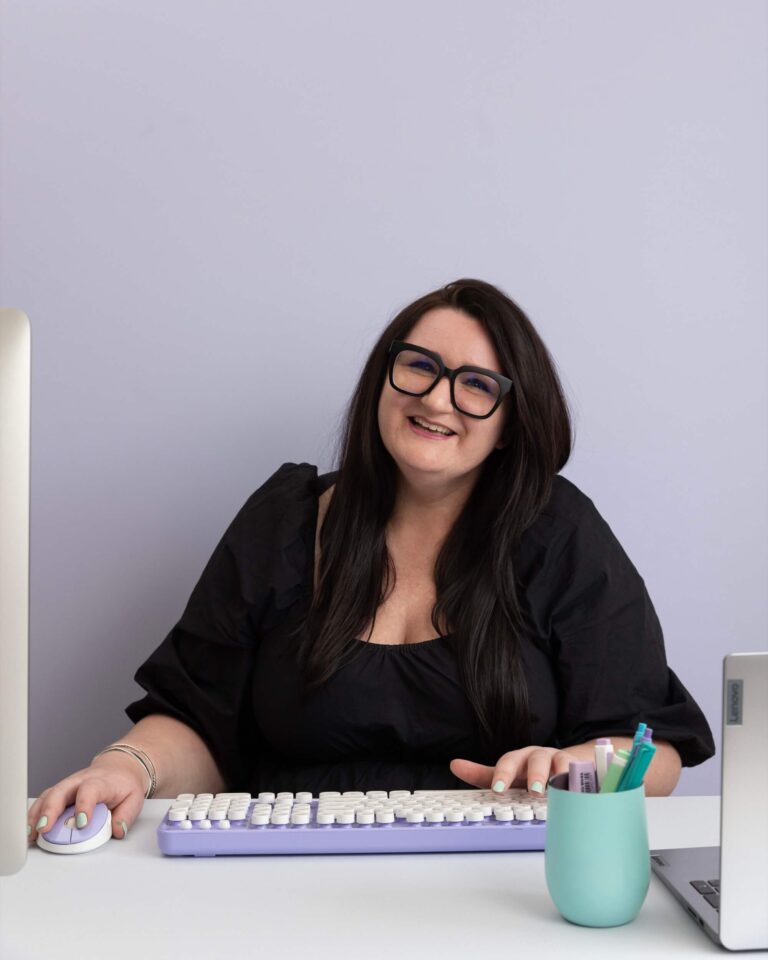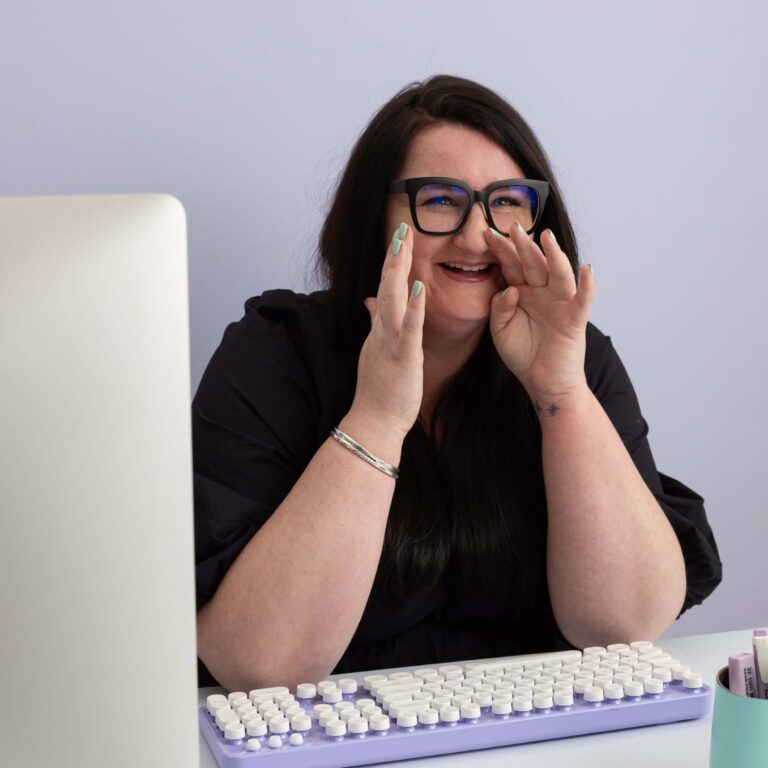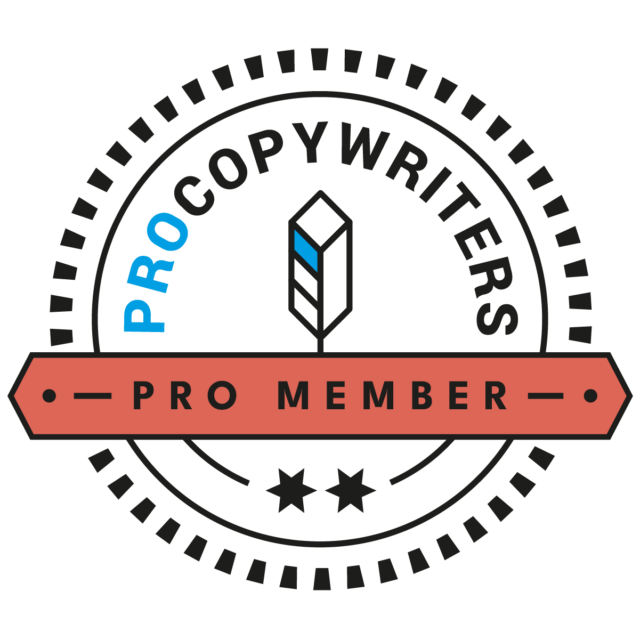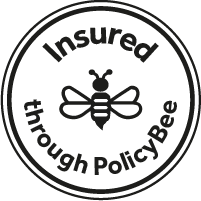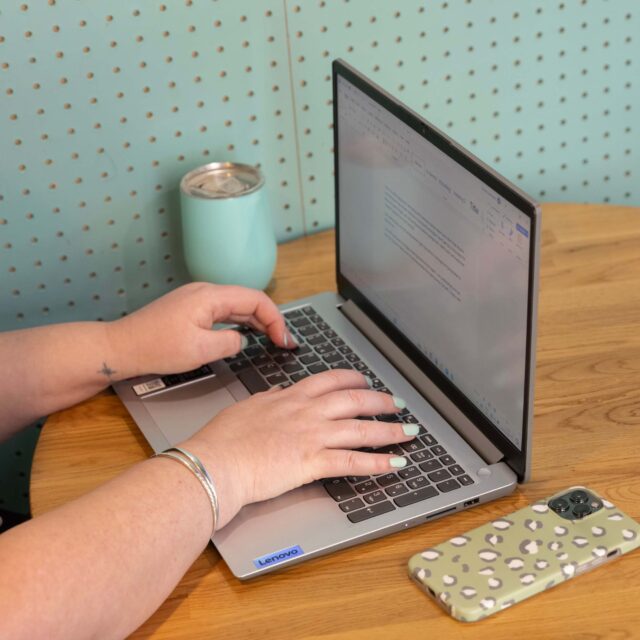
As a small business copywriter, I’ve had many conversations with my lovey clients about sustainability. Generally, my clients are incredibly sustainable and environmentally friendly. That’s one of the reasons I want to work with them.
But, for lots of reasons, many of my clients feel reluctant to highlight how sustainable they really are.
They’ll say things like:
- Fabric shop: “The thing is, I’m not sure if the ink which my suppliers use in the fabric printing process is fully sustainable. I probably can’t mention that my business is sustainable.”
- Florist: “Depending on the UK season and harvest I have to buy flowers from abroad. So, I’m not a 100% UK business, and there is overseas transport involved. I can’t really say I’m sustainable, can I?”
- Jeweller: “The jewellery industry is a known polluter. Really, what I do is a drop in the ocean, so there’s no point mentioning it.”
- Shoe seller: “The sandals I sell are made of leather. It’s not vegan leather or anything, so I don’t want to mention I’m sustainable. It could confuse people.”
(Towards the end of the blog you’ll find my solutions to explain all of these sustainable “issues”.)
I’ve heard it all. But it’s completely obvious to me in these instances that the small business owner is stuck in perfectionism.
Because they can’t guarantee every single tiny element of their business is sustainable, they feel they can’t talk about any of the significant sustainable things they do every day.
ONE: What exactly is “sustainability”?
According to the UN, sustainability is defined as: “meeting the needs of the present without compromising the ability of future generations to meet their own needs.”
So, being sustainable is living today in a way that won’t harm future generations (and perhaps even benefits people, the planet, the climate, the ecosystem). It’s not all about the future however. Being sustainable actually has financial benefits too.
Consumers care a lot about making sustainable choices. And, they’ll pay more to support a sustainable business. In 2023, theroundup.com summarised the year’s sustainable products market data:
- 78% of consumers feel that sustainability is important.
- 62% of consumers say they “always or often” seek products to purchase because they are sustainable.
- 55% of consumers are willing to pay more for eco-friendly brands.
By staying quiet about the impressive sustainable small business choices you instinctively and consistently make, you will be missing out on income.
TWO: How are small businesses naturally sustainable?
Even though I don’t know what your business is, I can be sure you’re already doing sustainable things.
Ways for service- based businesses to be sustainable:
- Green website hosting (read a great blog about that here)
- Sustainably printed flyers (eco- friendly ink and recycled paper, for example)
- Ecologi and other tree planting services
- Green energy supplier for your home/ office
- Sustainable co-working spaces
- Collaborating with sustainable freelancers
- Sustainably printed business cards
- Sending vegan/ sustainable referral gifts (I always send Cake or Death brownies as a thank you)
- Being part of ethical networks and pledges
- Using sustainable tools and products such as sustainable nail varnish (nail technicians), hair products (hairdressers), and cleaning products (car valet).
Ways for product- based businesses to be sustainable:
- Environmentally- friendly packaging
- Using suppliers within the UK (to cut down on airmiles/ transport miles)
- Choosing for products to be shipped rather than flown
- Selling made- to- order products (only using what you need/ no excess stock)
- Sustainably printed flyers (eco- friendly ink and recycled paper, for example)
- Ecologi and other tree planting services
- Green energy supplier for your home/ office
- Working with recycled materials
- Selling at markets and pop- up shops (minimal energy usage)
- Green website hosting
- Zero waste policies to use all materials
- Grouping deliveries and shipping
You might do these, and even more. Each one makes a tiny difference to the planet, and they all add up.
These are examples of sustainable working practices you should be communicating in your marketing. Even if you can’t guarantee every part of your business is sustainable, your customers still want to know what you are doing.
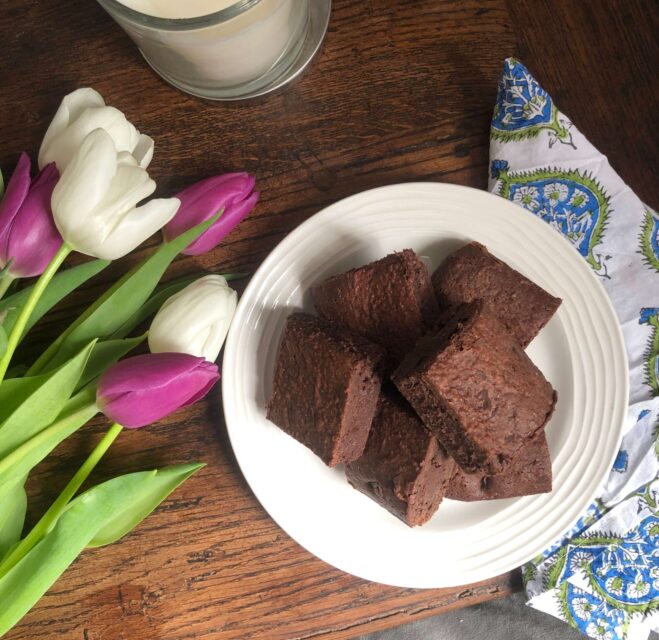
THREE: What actually is greenwashing?
My clients often report not wanting to accidently “greenwash” their products or services.
The good news is you can’t accidentally greenwash. Greenwashing is intentional and deceitful.
There’s no legal definition of greenwashing in the UK. Informally, we collectively understand it to be a company deliberately hiding their environmentally harmful processes behind misleading marketing. This includes practices such as intentionally fudging statistics, making claims which don’t add up, or being deliberately vague.
Sadly, greenwashing works. At least initially. If the buyer is in a rush or is busy, they can easily be misled. I fell for greenwashed marketing from big brand a couple of years ago. I bought a bag from a “Kind” range. There was a green heart over the “i” and the claim of “made with recycled materials” in the product description.
But in reality, the bag came in excessive plastic packaging, stuffed with plastic padding, and the fabric itself felt plastic. I had assumed that the recycled materials part meant the bag was made of cotton. But no. It was polyester, with no clarification of exactly how much of the material was actually recycled. It could have been 1% for all I knew.
The big brand and their marketing team intentionally misled me, and their other customers. They aimed to use greenwashing to capitalise on the sustainable trend. The whole experience made me feel cheated and annoyed. I’ve haven’t bought anything from the big brand since.
Greenwashing is generally done by big companies with big marketing budgets who actively try to show the company is sustainable when it’s not. There really is no way to operate as a big business, with thousands of weekly customers, and do it sustainably.
- They have established and huge manufacturing processes.
- They have large shipments using lots of energy and packaging.
- They move slowly, with policies and training taking a long time to implement.
- They typically have lots of stock and have to heat/ light enormous storage facilities.
- They’re responsible for hundreds of deliveries all over the country and the world.
With so many stakeholders and stock owners, none of these things can be managed with the environment in mind.
But, of course, small businesses don’t have to worry about any of these things. Small business owners are typically more scrupulous than big businesses, they’re more autonomous, more agile, and they’re answerable to their own consciences. This means they regularly do the right thing instinctively.
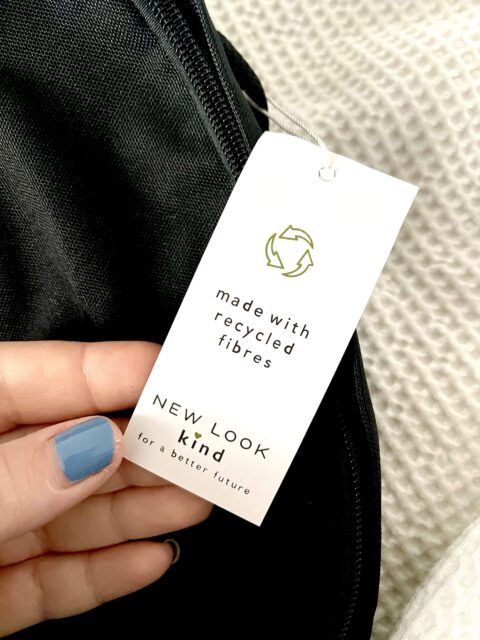
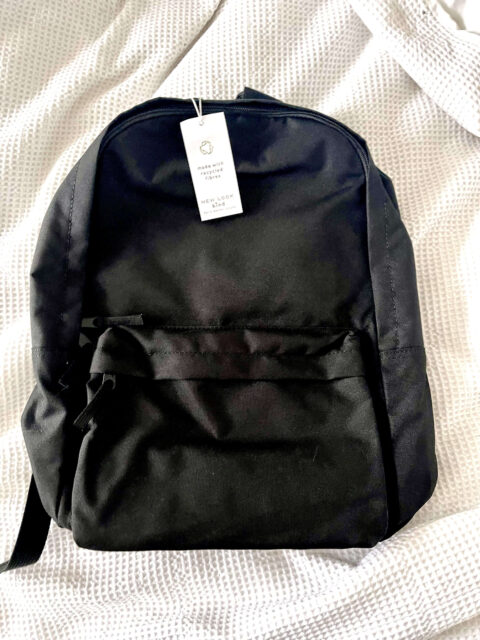
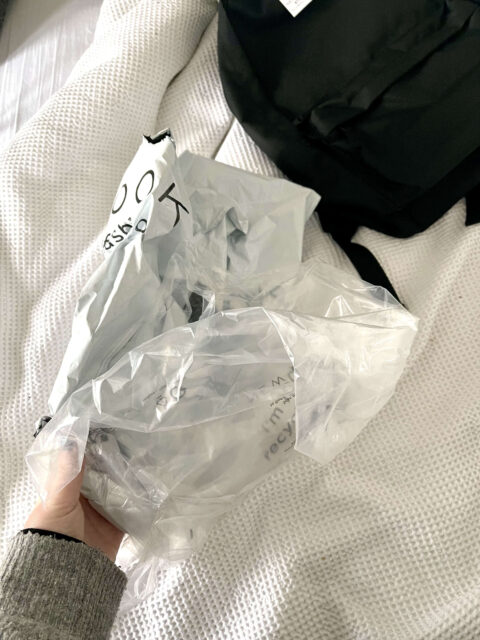
FOUR: Why is greenwashing bad?
After buying that bag from the big brand, their greenwashing trashed any trust I had in the business.
But, beyond ruining the relationship between customer and business, it is also reputationally damaging. Word will spread that the business engages in sketchy business practices, like these businesses did in 2023, and that distrust will linger.
If you’re ever worried that you’re greenwashing, ask yourself: “am I deliberately misleading customers for my own gain?”. I’m guessing the answer is “hell no!”, which means you’re not greenwashing.
But… how do you communicate your sustainability truthfully?
FIVE: How to honestly write about how sustainable your business is
This is far easier than my small business clients seem to think.
Just be factual!
In your website copy, product descriptions, social media captions, and newsletter, explain exactly how you are sustainable. Specify what you already do, what you plan to do, and what is beyond your control.
Never pretend you are or aren’t doing something, and never make promises you can’t actually keep.
Admit where your business or industry still has work to do towards sustainability, and where your business is different. This simply demonstrates your authenticity and integrity.
Here are some examples with the barriers mentioned at the start of this blog:
Fabric shop barrier:
“The thing is, I’m not sure if the ink which my suppliers use in the fabric printing process is fully sustainable. I probably can’t mention that my business is sustainable.”
Fabric shop sustainability solution:
Around 90% of our fabric is vintage, deadstock, or specifically sustainably- made with bamboo fibres and organic cotton.
However, fabric manufacture is a significant global polluter. Fabric is most often manufactured in China, Bangladesh, and Turkiye, which means fabric has travelled a very long way to get to my kitchen table in the UK.
To combat this harm, I do a number of things. While I personally cannot guarantee what processes were used for each fabric, I always try to find out. I work with UK independent suppliers, ethical designers, and vintage fabric suppliers.
When you buy fabric from me, you’re saving fabric from going to landfill, reusing vintage fabric, and supporting people in the fabric industry who are actively trying to make a difference.
No part of fabric creation and distribution and manufacture is perfect, but I make every sustainable decision I can. Around 10% of my profits each year go to fabric charity Triad. I ship everything to my customers in recyclable packaging. All fabric is cut to order, and I use green web- hosting to minimise my impact.
Florist barrier:
“Depending on the UK season and harvest I have to buy flowers from abroad. So, I’m not a 100% UK business, and there is overseas transport involved. I can’t really say I’m sustainable, can I?”
Florist sustainability solution:
Last year, every single flower arrangement in our shop or for events had British blooms and foliage in.
In the months of March- November each arrangement was 100% British. In December, January, and February, and depending on what design the customer wanted, each arrangement had between 20% and 60% of British flowers and foliage.
At times, I shipped in flowers from Europe because British flowers were out of season, and little grows in the winter. I always work with my trusted partner EuroFleur. They ship flowers in 100% recycled packaging, are completely organic and chemical free, and they work harmoniously with the seasons. They’re based in Lille, which is the closest supplier to our London shop, minimising the amount travel.
As a natural florist, I also forage for native and abundant greenery, with permission of landowners.
Aside from the flowers and foliage themselves, I exclusively use acid- free tissue and packaging which is recyclable and plastic- free.
Jeweller barrier:
“The jewellery industry is a known polluter. Really, what I do is a drop in the ocean, so there’s no point mentioning it.”
Jeweller sustainability solution:
The jewellery industry is a known polluter across the world, but at [business name] we’re not afraid to do things sustainably.
- The average stone in an engagement ring requires the removal and processing of 200 to 400 million times its volume of rock. So, we only use lab grown gemstones.
- Mining for precious metals produces around 16,300 tonnes of carbon dioxide per one tonne of mined product. So, we only use recycled gold and silver.
- Mass produced jewellery is made in factories where human rights violations are common, working practices are dangerous, and pollution levels are high. So, we only handmake pieces to order
This is only a snapshot of what we do at [business name]. While jewellery remains a luxury product, we work hard to make it accessible, fair, and sustainable. If you have questions about the sustainability of [business name]’s jewellery, we’d be happy to discuss it with you. Send us an email here.
Shoe seller barrier:
“The sandals I sell are made of leather. It’s not vegan leather or anything, so I don’t want to mention I’m sustainable. It could confuse people.”
Shoe seller sustainability solution:
You already know we love leather here at Sandrine’s Sandals. It’s biodegradable, durable, and, essentially, a waste product from the meat industry. With care, a pair of sandals could comfortably last a decade or more. A plastic pair of sandals, on the other hand, will need to be replaced after a summer or two.
What’s important to mention is that as much as leather is a quality product, the leather industry can be toxic. Awful working practices in poor countries, toxic tanning chemicals and dye, and the pollutants of animal agriculture all negatively impact people and planet.
To minimise this, at Sandrine’s Sandals, we have a zero-waste policy so every scrap of leather is valued and used. We offer free repairs to prolong the life of your sandals. We work with a small, family- run tannery which uses minimal chemicals and vegetable dyes. We never use airmiles to transport our sandals, they are shipped to the UK on energy efficient ships.
We actively choose the most sustainable option in both manufacture and shipping. Find more information on sustainability on each sandal description.
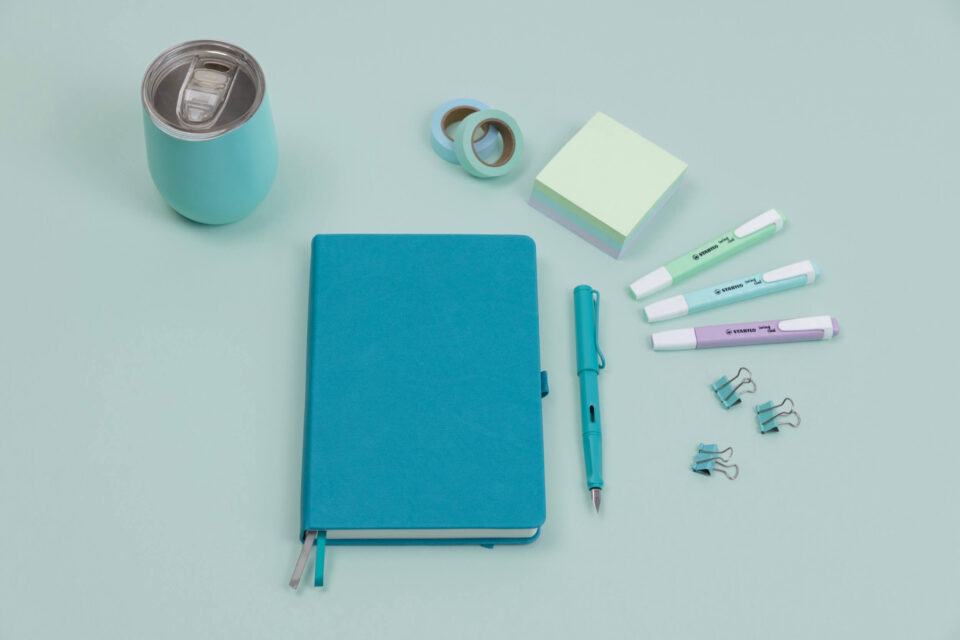
SIX: Where to mention sustainability on your website?
Your authentic approach to sustainability is built into every part of your business. So, talk about it naturally, regularly, and consistently. Here are some ways to do this:
- Explain how each product is sustainable in each product description.
- Discuss it in your blogs. Include where your industry is not sustainable and where progress is being made. Explain what your current sustainable practices are, as well as what you hope to do in the future.
- Report it in your testimonials or reviews when you customers mention it.
- Show off your packaging or sustainable flyers on social media.
- Include a little ‘values’ section on your about page explaining why you care about sustainability.
- Have a bespoke sustainability page on your website exploring everything you do.
- Include an industry- specific sustainability tip in your newsletter.
Hopefully you’re now ready to shout about all the sustainable choices you make in your business. Consider this blog your permission slip! If, on the other hand, you’re feeling a bit overwhelmed with exactly how you’re sustainable and how to communicate it, let me give you two options.
One: get in touch for a discovery call so I can write about sustainability for you.
I’d be chuffing delighted to hear from you.

